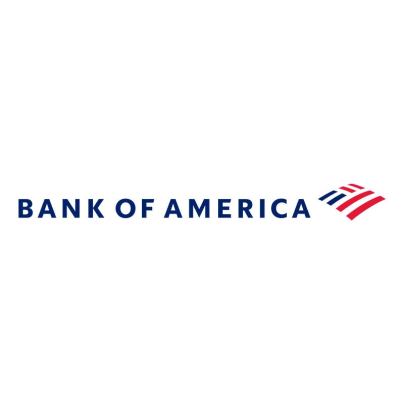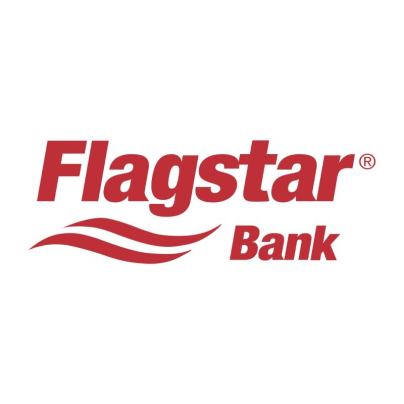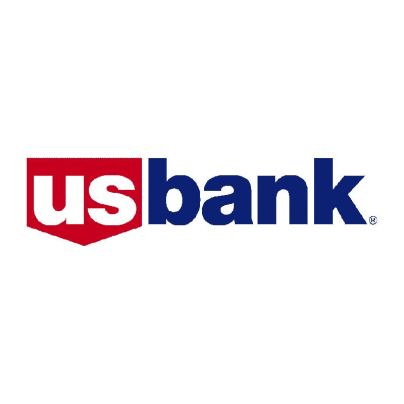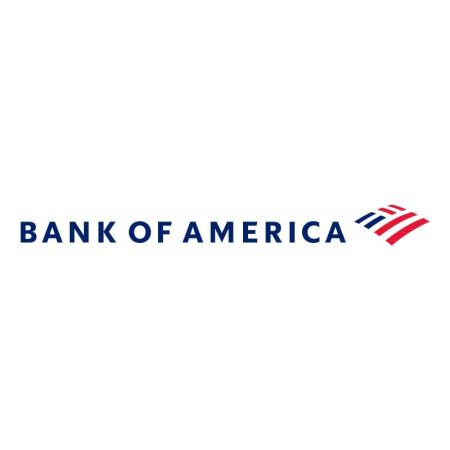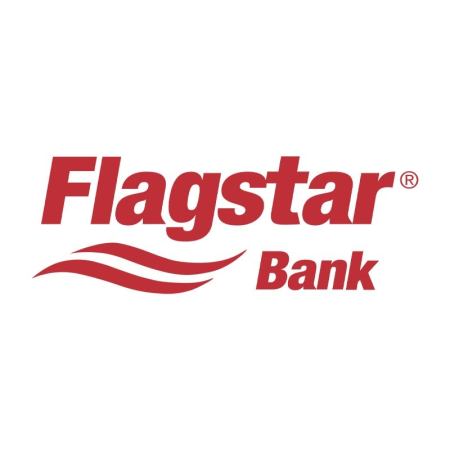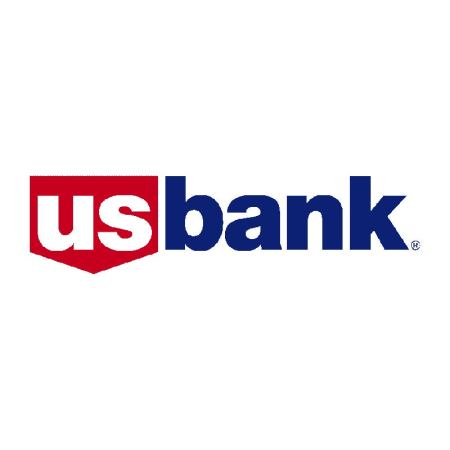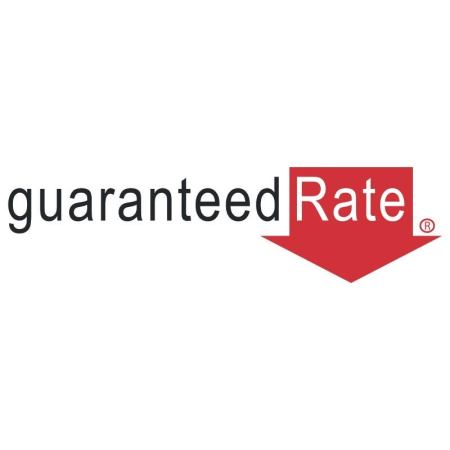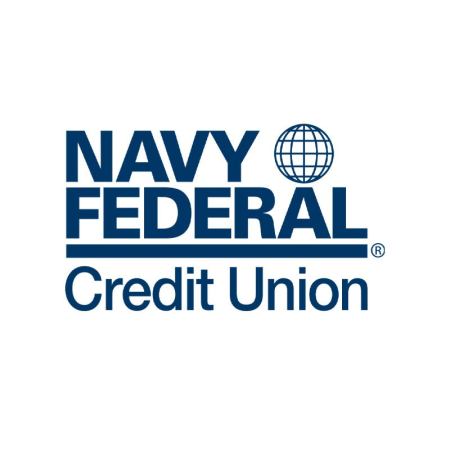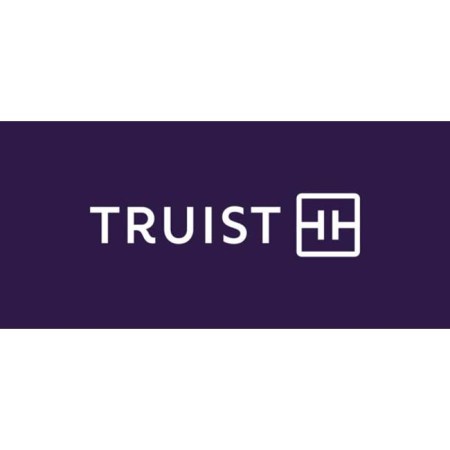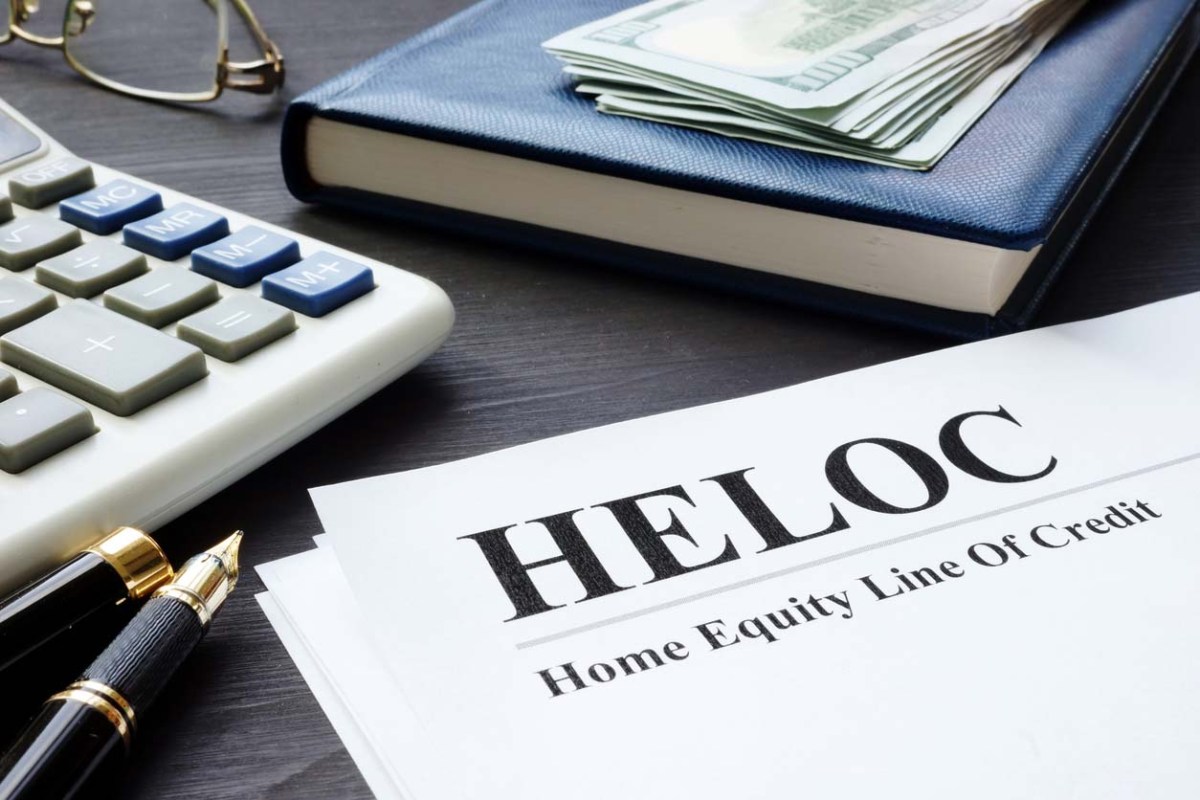
We may earn revenue from the products available on this page and participate in affiliate programs. Learn More ›
Home equity can be a valuable asset for homeowners, opening up new financing opportunities to help pay for various expenses. A home equity line of credit (HELOC) may be particularly appealing to borrowers who want to access funds on a rolling basis to cover costs as they arise. What is a HELOC mortgage? Like a traditional home equity loan, a HELOC converts accumulated home equity into spendable money, but funds are dispersed as a revolving line of credit rather than a lump-sum deposit.
Due to this disbursement model, a HELOC can be very useful to homeowners who have ever-shifting financial obligations. For instance, borrowers can use HELOC funds to pay for medical bills that change from month to month or open-ended home renovations that may involve multiple jobs. As spent funds are repaid, that money can be replenished, allowing borrowers to continue withdrawing HELOC funds as needed.
The best HELOC lenders offer a variety of benefits for homeowners to explore, and it’s important to find the right combination of perks to suit each situation. With a little research, homeowners can land on the best HELOC to meet their needs.
- BEST OVERALL: Bank of America
- RUNNER-UP: Flagstar Bank
- BEST FOR QUICK FUNDING: U.S. Bank
- BEST FOR LOW RATES: Guaranteed Rate
- BEST FOR SERVICE MEMBERS: Navy Federal Credit Union
- ALSO CONSIDER: Truist
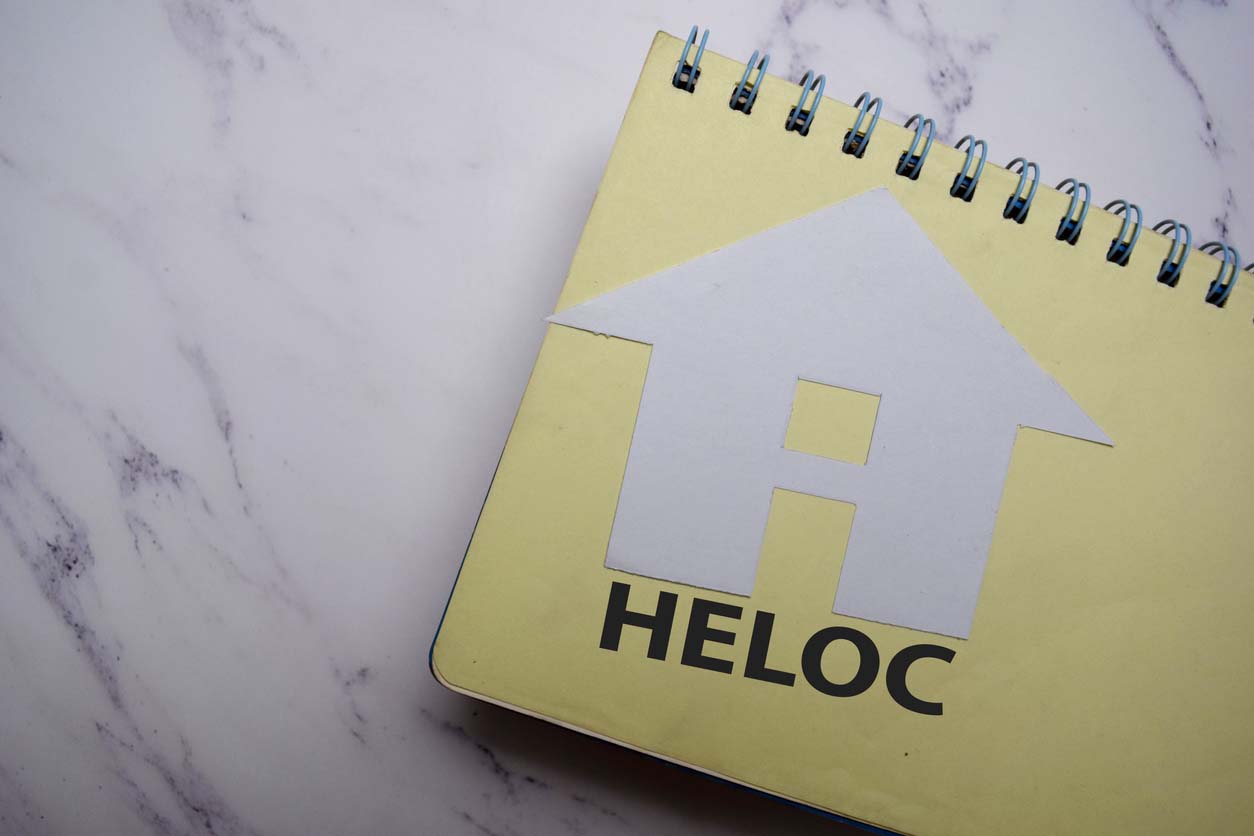
What to Consider When Choosing One of the Best HELOC Lenders
Finding the best HELOC lender for a homeowner’s needs can require a bit of up-front research and legwork. Borrowers are unlikely to find a one-size-fits-all solution, and all of the best HELOC providers bring something unique to the table. It’s often best to look for the right HELOC lender to suit a particular situation, as each person’s circumstances and priorities will be different.
Coverage Area
Homeowners may want to start their HELOC search by whittling down potential candidates to the HELOC providers that provide financing options to their particular state or ZIP code. HELOC availability can vary quite a bit from lender to lender; some companies maintain a nationwide footprint, while others have a much smaller coverage area. Before homeowners get too far along in the vetting process, it may be worth checking a company’s service area first to quickly eliminate providers that don’t offer HELOC services in their location.
Minimum Credit Score
Once homeowners have cut their list of potential HELOC providers down to companies servicing their particular region, they may want to direct their focus to eligibility requirements and consider how to qualify for a HELOC. Not all homeowners will be eligible for a HELOC in every scenario, and some loan companies may have more lenient eligibility standards and requirements than others. Although there are many metrics that loan providers will weigh when considering HELOC eligibility, a borrower’s credit score can make all the difference between an application being accepted or denied.
HELOC providers may have a minimum credit score that borrowers will need to meet to qualify for this type of financing. Minimum credit score requirements aren’t always made publicly available, and some companies may weigh these requirements on a sliding scale in light of other eligibility considerations. If homeowners are worried about a weak credit score standing in the way of HELOC approval, it may be a good idea to check with lenders for any credit score requirements before applying for a line of credit.
Maximum Loan to Value (LTV)
Homeowners need to have accumulated a certain amount of equity in their home before they will qualify for a HELOC. Loan providers frequently set maximum loan-to-value (LTV) ratio requirements that borrowers must meet to be eligible for a HELOC. An LTV ratio compares a borrower’s outstanding mortgage balance with the home’s market value. A borrower with an 80 percent LTV ratio, for instance, would own a 20 percent equity stake in their home because their existing mortgage represents 80 percent of the home’s assessed value.
In this way, LTV ratios can be used to gauge the amount of equity a borrower owns themselves compared with the portion their mortgage lender owns. How much equity do you need for a HELOC? Maximum LTV amounts vary from lender to lender, but some HELOC companies may require borrowers to have at least 15 percent equity in their home to be eligible.
LTV ratios are important for HELOC eligibility for two reasons. First, they can be helpful signifiers of financial stability—or instability, as the case may be. A homeowner with a lower LTV ratio will have likely spent several years consistently paying their mortgage and meeting their financial obligations, so they may be in a better position to manage a HELOC. Second, LTV ratios can be used to determine how large a HELOC a borrower may receive since the ratios reflect the amount of equity available for use.
Unlike credit score requirements, maximum LTV requirements are often readily available on lenders’ websites, so homeowners can typically see where they stand before submitting an application. Figuring out the homeowner’s own LTV ratio—or at least an approximate estimate—can be relatively easy, as well. By dividing their outstanding loan balance by the home’s market value, homeowners can get a good idea what their LTV ratio looks like. However, lenders will often use the home’s appraised value, which could require a new appraisal, to calculate an applicant’s LTV ratio.
Debt-to-Income (DTI) Ratio
A debt-to-income (DTI) ratio can be a good indicator of a borrower’s ability to manage a new loan and all the financial obligations that come with it. DTI ratios compare borrowers’ current monthly debt payments with their gross monthly income—that is, their income before subtracting taxes, withholdings, and deductions. A higher DTI ratio may mean that individuals already owe a significant amount of debt in relation to their income, which could make it difficult to take on even more debt in the form of repaying a HELOC.
With that in mind, it’s not uncommon for HELOC lenders to set DTI requirements when vetting potential borrowers. This way, they can avoid loaning funds to borrowers who present a high risk for nonpayment. Like other eligibility criteria, maximum DTI ratios may or may not be publicly available, so it can be a good idea to reach out directly to a loan officer to see what DTI requirements a homeowner may need to meet given their overall financial situation.
HELOC Amount
Part of the appeal of a HELOC is that borrowers don’t necessarily need to have a set loan amount or purpose in mind when they open a line of credit. Even so, many borrowers wonder, “How much HELOC can I get?” when vetting lenders. After all, there are plenty of scenarios where borrowers will want a bare minimum of funds available when taking out a HELOC. For instance, a homeowner who plans on using HELOC funds to pay for home renovations may have a few initial projects in mind, and they may want to have extra money close at hand to cover any cost overruns or additional jobs down the road.
As such, it may be a good idea to check the maximum HELOC amount offered by each lender. HELOC amounts can vary quite a bit across loan providers, so it’s worth verifying those figures ahead of time. Prospective borrowers may be able to eliminate any HELOC lenders offering a lower maximum line of credit than they think they need.
Minimum APR
When considering the cost of a HELOC or any other type of loan, it can be helpful to look at the annual percentage rate (APR). The APR represents the total annual cost of a loan, including interest and any fees or closing costs that the borrower must pay. In general, borrowers with stronger credit scores and borrowers with stronger credit scores and stable financial circumstances may receive a more favorable APR on their HELOC. That being said, lenders may have their own set minimum APR, and borrowers won’t be able to get a lower rate beyond that figure no matter how strong their financial situation.
Like other secured loans, HELOC rates offered by lenders can change from day to day, depending on a variety of economic factors. When shopping around with the best HELOC lenders, homeowners may want to keep a close eye on mortgage rate trends and current HELOC rates to see which companies can offer the most competitive APR on a HELOC.
Application Process
When considering how to get a HELOC, homeowners may want to look at the application process for each lender. Applying for a loan can be a quite lengthy process in some cases, requiring financial reviews, credit inquiries, and various documents such as bank statements or tax returns. Online workflows can make the application process go more smoothly and quickly, but not all lenders support digital HELOC applications. Conversely, some loan providers only accept applications online, which may not be a good fit for homeowners who prefer to speak directly to a loan officer as they go through each step.
Another consideration to weigh regarding the application process is how long it may take to have an application approved and the HELOC funded. Time frames can vary from lender to lender, so homeowners who need access to HELOC funds sooner rather than later may want to take into account each lender’s anticipated funding timeline.
Closing Costs and Fees
Although the purpose of a HELOC is to gain access to additional funds to help pay expenses, these types of loans may come with some up-front costs that borrowers will need to pay. Like any other type of home loan, a HELOC will often come with closing costs that are due before the funds can be disbursed. In addition, borrowers may be required to pay for a variety of lender fees, such as application, appraisal, and origination fees. Closing costs and fees often vary—and sometimes quite a bit so—across loan providers, so cost-conscious homeowners may want to consider the initial expense of opening a new line of credit before choosing a HELOC company.
One important caveat is that some HELOC lenders may allow borrowers to finance any closing costs or fees they owe. By doing so, they allow borrowers to spread those costs across the life of the loan rather than pay in full all at once.
Draw Period
Because a HELOC is a line of credit, rather than a traditional lump-sum loan, it’s structured in a very different manner compared with a home equity loan. How does a HELOC work? The life of a HELOC consists of two phases: the draw period, in which the borrower can pull funds from the line of credit, and the repayment period. During the repayment period, borrowers are no longer able to draw from their line of credit; instead, they are responsible for paying back their outstanding balance, making monthly payments as they would with any other home loan.
Homeowners may find that draw periods can range from just a couple of years to a couple of decades, depending on the lender they choose. Some borrowers may prefer a longer draw period so they can continue accessing funds for any expenses that come up for the foreseeable future. Other people may have very specific goals in mind when taking out a HELOC and may want to keep that line of credit open for a shorter period of time to avoid carrying too much debt for too long.
Our Top Picks
The best HELOC lenders can provide additional funds when homeowners need that money most. When searching for the right fit for their needs, borrowers may want to consider each provider’s availability, line of credit options, and total cost of financing, among other factors.
Best Overall
Bank of America
- Coverage area: 50 states and Washington, D.C.
- Maximum LTV: 85 percent
- HELOC amount: Up to $1 million
- Minimum APR: 7.40 percent
- Draw period: 10 years
Pros
- Nationwide availability
- High $1 million maximum line of credit in all states
- Initial draw discount up to 1.5 percent
- Rate discount up to 0.375 percent for Bank of America Preferred Rewards members
Cons
- Relatively low 85 percent maximum LTV ratio
Why It Made the Cut: With a nationwide footprint, high HELOC caps, and multiple discount opportunities, Bank of America is a great financing option for many homeowners across the country. As a major financial institution, Bank of America is in a strong position to offer HELOCs to homeowners all over the country. The company provides HELOC options to residents of every state and Washington, D.C., so homeowners can apply for this type of financing no matter where they live. At the same time, they may want to be mindful of the company’s somewhat low maximum LTV ratio requirements; homeowners with an LTV ratio above 85 percent will not be eligible for a HELOC. That being said, prospective borrowers who are unable to meet those requirements may be better off building more equity in their home before applying for a HELOC. Homeowners who qualify for a Bank of America HELOC will find that they could receive a line of credit as high as $1 million, depending on how much equity they have and other eligibility factors. Borrowers may also be able to reduce the total cost of their HELOC by taking advantage of one of Bank of America’s available discounts. For instance, borrowers can receive a discount on the interest owed on their initial draw—up to 1.5 percent off. In addition, Bank of America Preferred Rewards members can receive a reduced interest rate—up to 0.375 percent off their rate—which can help homeowners lower the total cost of their HELOC.
Runner-Up
Flagstar Bank
- Coverage area: 49 states and Washington, D.C.
- Maximum LTV: 89 percent on primary residences; 80 percent on secondary residences
- HELOC amount: $10,000 to $1 million
- Minimum APR: 6.99 percent
- Draw period: 10 years
Pros
- High $1 million maximum line of credit in all states
- Lower introductory APR available for first 6 billing cycles
- Generous 0.5 percent discount on automatic payments
Cons
- No online application process
Why It Made the Cut: Flagstar Bank offers a high maximum line of credit on HELOCs, potential discounts on automatic payments, and a low introductory APR for qualifying borrowers. Homeowners looking to access a large line of credit may find Flagstar Bank to be an intriguing option. The company offers lines of credit as high as $1 million to eligible borrowers across the country, potentially providing plenty of funds to pay for a wide variety of projects and expenses. Although Flagstar does not support an online process to apply for a HELOC, some homeowners may prefer to speak with a loan officer to talk through their options and choose the right financing terms for their situation. From a cost perspective, Flagstar Bank gives borrowers multiple options to reduce the cost of their HELOC, including a 0.5 percent discount for account holders who enroll in automatic payments. Flagstar also offers a lower introductory APR for borrowers who make an initial draw of at least $50,000. Qualifying borrowers can temporarily take advantage of a lower APR for the first six billing cycles of their HELOC. Homeowners who apply for both of these discounts can reduce the amount of interest they owe on their HELOC, lowering the total cost of their line of credit.
Best for Quick Funding
U.S. Bank
- Coverage area: 49 states and Washington, D.C.
- Maximum LTV: 90 percent
- HELOC amount: $15,000 to $750,000 ($1 million in California)
- Minimum APR: 6.45 percent
- Draw period: 10 years
Pros
- Quick 3-day minimum funding time frame
- Generous 0.5 percent discount on automatic payments
- Wide range of home equity financing options
- Helpful home equity financing decision-making tool
Cons
- Potential $90 annual fee
- Early closure fee up to $500 on accounts closed within 30 months
Why It Made the Cut: U.S. Bank can provide a quick turnaround time on fund disbursement, along with various financing options and a discount on automatic payments, making this lender a good option for homeowners who want their HELOC funds as soon as possible. U.S. Bank distinguishes itself among the best HELOC lenders by giving borrowers the opportunity to start withdrawing funds from their HELOC in as little as 3 days from the time their application is approved. Such a quick funding time frame means borrowers can start drawing from their HELOC and paying for expenses in a very short length of time. Homeowners will want to be aware of the potential fees they may owe when taking out a HELOC with U.S. Bank, including a $90 annual fee in some cases. The lender also charges an early closure fee that can be as high as $500 if borrowers close out their HELOC within the first 30 months of the financing agreement. Even with those potential expenses, borrowers can still reduce the total cost of their HELOC by enrolling in automatic payments, which will lower their APR by 0.5 percent. In some cases, a HELOC may not be the best option for homeowners to pay for renovation projects or cover expenses, but U.S. Bank offers a wide range of home equity–based financing tools to explore. Those include traditional home equity loans, cash-out refinances, and the company’s Smart Refinance program. U.S. Bank’s website also has an online home equity recommendation tool, which can help homeowners on the fence find the right solution to get the most from their accumulated home equity.
Best for Low Rates
Guaranteed Rate
- Coverage area: 41 states and Washington, D.C.
- Maximum LTV: 90 percent
- HELOC amount: $20,000 to $400,000
- Minimum APR: 5.81 percent
- Draw period: 2 to 5 years
Pros
- Low 5.81 percent minimum APR
- Standard fixed-rate HELOC
Cons
- Relatively low $400,000 maximum line of credit
- Short 2- to 5-year draw period
Why It Made the Cut: Guaranteed Rate offers a unique HELOC option with a fixed interest rate and a low APR, appealing to homeowners who are looking for a short financing agreement and quick funds. Guaranteed Rate’s HELOC does not fit the mold of a traditional home equity line of credit. Rather than attach a variable interest rate, which can change throughout the life of the HELOC, the company offers a standard fixed-rate HELOC. This approach can help borrowers avoid future rate increases that could increase the cost of their HELOC. On the other hand, a Guaranteed Rate HELOC will only provide a line of credit up to $400,000, but homeowners may find that amount of money to be more than sufficient to pay their expenses. While some borrowers may find the company’s 2- to 5-year draw period to be fairly short, others may prefer to close out their HELOC as soon as possible to avoid accumulating excessive debt. Eligible borrowers may also qualify for an APR as low as 5.81 percent, which when combined with the fixed interest rate, could help lower the cost of their HELOC.
Best for Service Members
Navy Federal Credit Union
- Coverage area: 49 states and Washington, D.C.
- Maximum LTV: 95 percent on primary residences; 70 percent on investment properties
- HELOC amount: $10,000 to $500,000
- Minimum APR: 6.50 percent
- Draw period: 20 years
Pros
- High 95 percent maximum LTV
- Long 20-year draw period
Cons
- Eligibility limited to active or retired service members
- Higher APR (by 1 percentage point) on lines of credit under $25,000
Why It Made the Cut: With its high maximum LTV requirements and extremely long draw periods, Navy Federal Credit Union may be a great HELOC option for active or retired service members. Members of the armed forces who struggle to qualify for a HELOC with other lenders may find the right fit for their financial circumstances in Navy Federal Credit Union. The financial institution specializes in providing banking and lending offerings to active-duty soldiers, veterans, and other service members. In fact, credit union membership is restricted to individuals who either have served in the armed forces themselves or are closely related to an active or retired service member. Homeowners who qualify for Navy Federal membership may be eligible for a HELOC with an LTV as high as 95 percent, which is extremely generous for this type of financing. This means that more service members can qualify for a HELOC even if they haven’t accumulated a significant amount of equity in their home just yet. Borrowers should be aware that taking out a smaller line of credit could increase their APR—Navy Federal adds 1 percentage point to the APR on lines of credit under $25,000. Individuals who qualify for a larger loan amount can easily avoid that APR increase, though. Another benefit that may appeal to homeowners is Navy Federal’s lengthy draw period. Borrowers can withdraw funds from their HELOC for 20 years—double the typical time frame—giving them access to HELOC funds for a much longer period of time.
Also Consider
Truist
- Coverage area: 18 states and Washington, D.C.
- Maximum LTV: 90 percent
- HELOC amount: Unlisted
- Minimum APR: 7.70 percent
- Draw period: 10 years
Pros
- Variable, fixed, and interest-only payment options
- Quick and straightforward online application process
Cons
- Small service area covering 18 states and Washington, D.C.
- Relatively high 7.70 percent minimum APR
- High potential closing costs up to $10,000
Why It Made the Cut: Truist may be a viable alternative for homeowners looking for the best HELOC lender, providing different types of payment options and a user-friendly online application workflow. Homeowners interested in taking out a HELOC but who worry about the logistics of repaying any funds they withdraw may find Truist to be an appealing option. Truist gives borrowers the option to repay their HELOC funds, interest, and fees through fixed, variable, or interest-only payments. Having these different payment options can make it easier for individuals to budget around their HELOC costs. Prospective borrowers will want to check that they live within Truist’s service area, as the company only provides HELOCs in 18 states and Washington, D.C. They may also want to be mindful of the long-term costs of taking out a Truist HELOC since the lowest available APR is 7.70 percent. In addition, closing costs and fees could wind up being as high as $10,000, but Truist may allow borrowers to defer payment of those costs until later down the road. Digital natives and homeowners who prefer to manage their finances online will find a lot to like with Truist’s application platform. Applying for a HELOC online is quick and convenient, making it easier for homeowners to go through the HELOC process from start to finish.
Our Verdict
Bank of America gets the nod for Best Overall due to its nationwide footprint and large maximum line of credit amounts. We chose Flagstar Bank as our Runner-Up because of its high HELOC limits and generous discount opportunities.
How We Chose the Best HELOC Lenders
When determining the best HELOC lenders, we began by weighing factors that would affect availability and eligibility. Those factors include each company’s service area, maximum LTV requirements, membership restrictions, and other eligibility criteria. Cost considerations were important factors that influenced our rankings as well. We looked at the minimum APR of each HELOC lender, along with any closing costs or additional fees that a borrower might need to pay when taking out a HELOC. In addition, we reviewed different discount options available to borrowers that could help them lower the cost of a HELOC.
We also took into account how each company’s HELOC options were structured, especially when those choices could impact the borrower experience. As such, draw periods, funding time frames, and application processes all factored into our research and influenced our final rankings.
Before You Choose One of the Best HELOC Lenders
Under the right circumstances, a HELOC can be an extremely valuable asset, giving homeowners access to funds to help pay for whatever expenses they may incur. Because HELOCs are secured loans, borrowers will need to put forward some collateral—in this case, their home. In fact, a HELOC will act as a second mortgage on the borrower’s home, adding an additional mortgage payment each month.
As such, it’s possible that nonpayment could lead to foreclosure, so homeowners need to be sure they can handle the financial responsibility that comes with a HELOC before taking on more debt than they can manage. With so much at stake, it’s also often recommended that borrowers avoid spending HELOC funds on unnecessary expenses, such as vacations.
It may also be a good idea to keep in mind that there are other ways to tap into home equity that may better suit an individual’s circumstances. For instance, homeowners who want to change the terms of their current mortgage while taking out some of their accumulated home equity may want to explore a cash-out refinance instead. The best mortgage lenders often offer a variety of options for borrowers to tap into their home equity.
Cost of Opting for One of the Best HELOC Lenders
Taking out a HELOC comes with additional costs that can vary from lender to lender. Chief among them is the interest that borrowers will need to pay on any funds they withdraw from their line of credit. HELOC rates typically use variable interest rates, which change over the life of the loan to reflect shifting market conditions, but homeowners may find specialized options that offer fixed rates instead. Because variable rates are so common, it’s worth knowing that borrowers may wind up paying more or less interest than what HELOC rates today may suggest.
It’s also likely that borrowers will need to pay closing costs on their HELOC, although lenders may give the option to finance those expenses and spread them out across the repayment period. When considering the total cost of opting for one of the best HELOC lenders, it’s important to also factor in any discounts that may be available. Lenders may offer lower interest rates on initial draws or for signing up for automatic payments, among other discount opportunities.
The Advantages of Opting for One of the Best HELOC Lenders
Taking out a HELOC can help homeowners pay for home improvement projects in addition to other major expenses. A HELOC can also provide additional funds to have on hand if unexpected costs arise sometime down the road. Because they convert home equity into cash, HELOCs can be a good way to put any accumulated ownership equity to use. The best HELOC lenders can offer several benefits to help homeowners make the most of their line of credit:
- HELOC amounts up to $1 million in some cases, giving homeowners access to large sums of additional money;
- Various discounts that can help lower interest rates and reduce the out-of-pocket costs of taking out a HELOC; and
- Relatively low APR options, especially compared with the typical interest rate ranges offered by credit cards and personal loans.
FAQs
A HELOC is a specialized financial instrument, which can lead to confusion regarding how a HELOC works or the best conditions to take advantage of this type of home equity loan. Addressing some of the most common questions borrowers have about HELOCs can make it easier to decide if a line of credit is the right option for homeowners looking to tap into their home equity.
Q. What does HELOC stand for?
HELOC stands for “home equity line of credit,” which means that this type of financing provides a revolving line of credit that borrowers can pull funds from, rather than receive the full loan amount all at once.
Q. What is a HELOC draw period?
A HELOC draw period is the phase of the HELOC in which borrowers can withdraw funds from their line of credit. In many cases, the draw period will run for 10 years, but some home equity loan lenders may offer draw periods that can be much shorter or longer than that amount of time. Once this period ends, borrowers will no longer be able to take funds from their line of credit and will instead need to make monthly payments until their outstanding balance is repaid.
Q. Is HELOC interest tax deductible?
Homeowners may be able to get a tax deduction on their HELOC interest under certain conditions. According to the IRS, tax payers may be to deduct home equity loan interest when those funds are used to make improvements on their home. It should be noted, however, that this tax deduction only applies to interest paid before 2018 or after 2025, so homeowners may not be able to currently take advantage of this deduction. When this tax deduction is available, homeowners may want to keep in mind that it is not limited to HELOCs alone. There are many types of home improvement loans out there, and any interest paid on them could be tax deductible in certain circumstances.
Q. How long does it take to get a HELOC?
A HELOC acts as a second mortgage on the borrower’s home, and like a traditional mortgage, it can take a long time to process an application, conduct underwriting reviews, and disburse funds. How long does it take to get a HELOC? Homeowners may wait anywhere from 30 to 45 days from application to get access to their HELOC funds. Some lenders offer more specialized HELOC options, however, which can cut that funding time down significantly.
Q. What’s the difference between a HELOC vs. home equity loan?
The main difference between a HELOC vs. home equity loan is that a HELOC is a line of credit to withdraw funds from, whereas a home equity loan provides borrowers with a single deposit. Both financing options allow homeowners to tap into their home equity, though. Another consideration is that home equity loans often use fixed interest rates, whereas HELOCs typically use variable rates, although that is not always the case. If a fixed-rate loan seems like a better option, it may be worth checking out the best home equity loan lenders.
Q. What’s the difference between a HELOC vs. cash-out refinance?
A cash-out refinance functions somewhat similarly to how a home equity loan works, in the sense that both give borrowers a lump-sum payment instead of a revolving line of credit. Another key difference between a HELOC and cash-out refinance is the fact that a HELOC acts as a second mortgage, while a cash-out refinance will replace a borrower’s existing mortgage with new loan terms.
Q. How do you build home equity?
Homeowners can build equity in their home by simply making their mortgage payments each month. As they pay down the principal balance on their mortgage, homeowners will steadily accumulate more home equity. They may also gain more home equity if the property’s market value increases since it was purchased and the homeowner requests a reappraisal. Over time, homeowners may have plenty of opportunities to then take equity out of their home to cover their expenses.
Q. What credit score do you need for a HELOC?
Credit score requirements vary by lender, and those minimum standards are rarely published for public consumption. That being said, a higher credit score will increase a borrower’s prospects of being approved for a HELOC. In addition, individuals with strong credit are more likely to receive more favorable HELOC terms, such as a lower interest rate. Even so, it may be possible to find HELOC lenders for bad credit who offer more lenient eligibility requirements.
Q. Does Rocket Mortgage offer HELOCs?
Rocket Mortgage does not currently offer HELOCs. It does offer other ways to take advantage of home equity, though, including a cash-out refinance. Lenders also change their financing options from time to time, so there may be a Rocket Mortgage HELOC sometime in the future.
